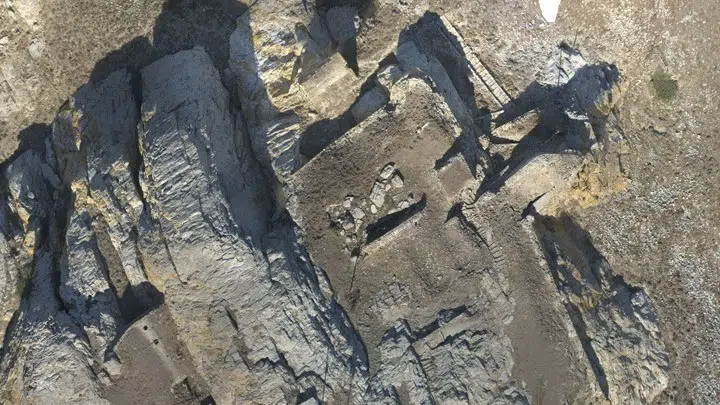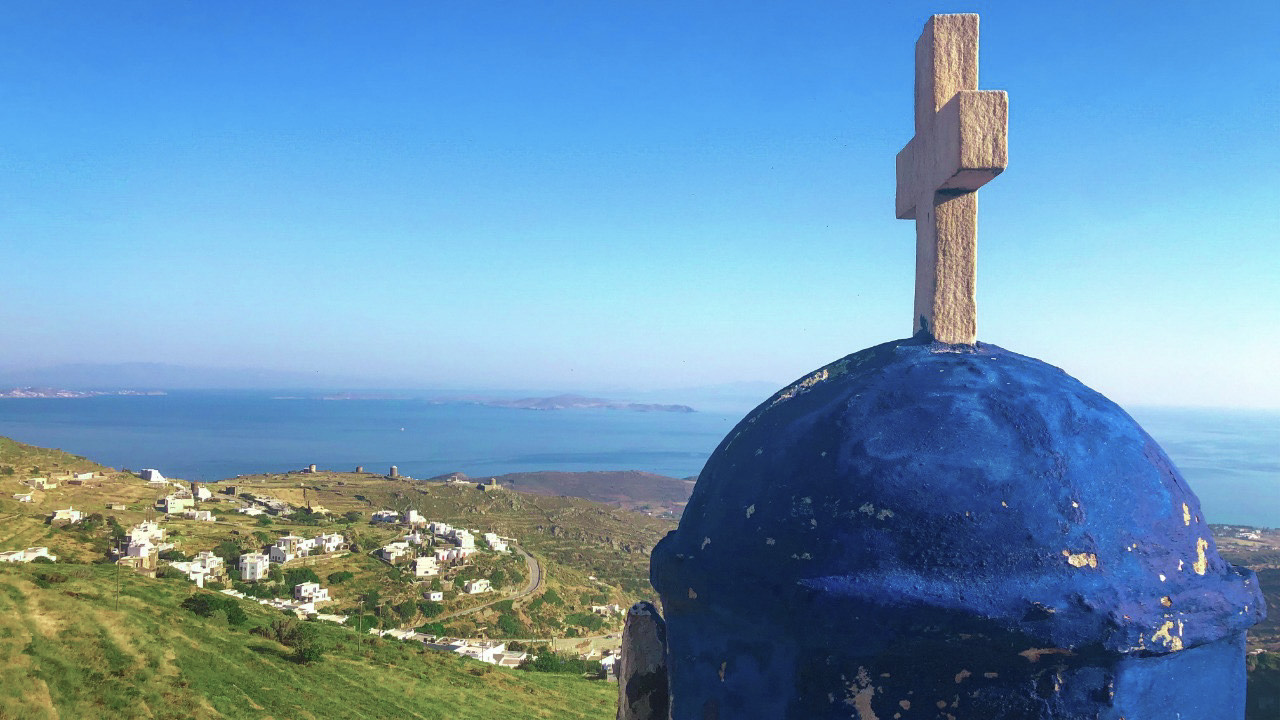
New archaeological research on Tinos has revealed the rich Byzantine history of the island that was not known before, shedding new light in Aegean Sea history as well.
The preliminary results of the research project “Byzantine and Latin-ruled Tinos: Old and new archaeological data” were presented at the “Leonidas Zervas” Amphitheater of the National Research Foundation (NRF).
According to the Athens-Macedonian News Agency (AMNA) report, the project is a collaboration between the Cyclades Ephorate of Antiquities of Greece’s Ministry of Culture and the Institute of Historical Research (IHR). Project director is Dimitris Athanasoulis of the Cyclades Ephorate of Antiquities and co-director is Anastasia Giagaki of the National Research Foundation.
Important Byzantine History

“For the first time, systematic archaeological research is being done for the Middle Ages period on Tinos” Athanasoulis said, adding that the medieval period lasted several centuries more for Tinos, and there are more indicators of its importance in the Aegean.
One of them is the active lifespan of Chora, the island’s capital. “With the study of the ceramics and the findings from the old excavations of Chora, the time span of use of the port from the late Roman years, i.e. from the 3rd and 4th centuries, is extended through the 8th century century, Athanasoulis said.”
“It seems that the port survives this transitional period as well and this is very important because it shows us that Tinos still had an important anchorage until the early Middle Ages.”
The second indicator is the fortress of Agia Eleni, located on the imposing hill of Xoburgos in the center of the island. According to the new findings, what until now only existed as a hypothesis is confirmed, namely that the acropolis of Agia Eleni is the Byzantine fortress of the 7th century.
“For the first time, the Byzantine phase of Agia Eleni was identified. There there is a square precinct on the acropolis with a large pentagonal tower. Essentially we have the same pattern as the rest of the castles in the Cyclades identified in our recent studies. In other words, during the time of the Arab invasion, a large investment was made by the Byzantine Empire to protect and control the Aegean and one of these castles is located on Tinos,” Athanasoulis said.
Island Fortification Network in the Aegean
According to the ephorate director there was a rather complex network of Cycladic island fortifications in the transitional centuries (7th – 9th), each with at least one castle.
“On the one hand, the castles form a visual communication network that covers the entire central Aegean, with coastal castles guarding important ports and anchorages, while those on hills oversee the island, ports and sea lanes. On the other hand, they have accommodation for guards and accommodation for the islanders in times of danger, while they also function as state warehouses for the management of agricultural products and the feeding of the army,” Athanasoulis said.
On Tinos, the fortification network includes the castle of Xobourgos. “In contrast to coastal fortifications, such as on Kythnos, Mykonos and especially Paros and Naxos, Xobourgos is founded inland. As is the case with other inland castles, such as Apaliros in Naxos, its role is to protect the agricultural production of the island and, at the same time, to supervise Tinos and the sea routes around it. The visibility analysis from the citadel confirms this role. From Xobourgos one could have visual contact with a large part of the Cycladic archipelago,” Athanasoulis elaborated.

And he continued: “In this position there would be the Byzantine garrison of the island and it would function as a place to store the production and a refuge for the Tinians in times of danger. Even though the buildings that presumably exist inside the walls have not been excavated, the pottery from the site confirms such a use.”
Athanasoulis further said that the Venetians who arrived later resumed the use of Xobourgos and in the acropolis of Agia Eleni they added to the fortifications of the transitional centuries. Their negligent use of masonry is evident as the small stones they added stand out from the large stones the Byzantines used before.
“In the case of the large pentagonal tower, its geometric shape is altered and the sharp end gives way to a higher, rounded corner. After all, one can distinguish more than one intervention, indicating the constant use of the acropolis.”
Fifth Century Basilica Found Under 16th Century Church
The third important information the research provided is found in the excavation at Agia Anastasia in the “Redia” site as it reveals a much earlier phase.
“Agia Anastasia is a two-aisled church from the 16th century, under which we discover an early Christian basilica from the 5th century. And this is very important, because it is the oldest church that has been built on the island and which continued to be used until the end of the 7th century,” Athanasoulis said.
After a gap in its use, the church was used again in the mid-Byzantine period (12th century) and later, in the 16th century when it was reconstructed into a two-aisled structure.
The research program “Byzantine and Latin-ruled Tinos: Old and new archaeological data”, carried out from 2019 to 2023, will continue. The focus is on the above excavations positions, as well as others on which preliminary work has been done.
One of them is Paleokklisia in the area of Zodemeni, also one of the oldest churches on the island, although newer than the early Christian church of Agia Anastasia. It is a large-scale temple, which was covered with a sloping stone roof, a particularly rare solution found in only one other monument in the Cyclades. The site is included in the plan for further research.
See all the latest news from Greece and the world at Greekreporter.com. Contact our newsroom to report an update or send your story, photos and videos. Follow GR on Google News and subscribe here to our daily email!



